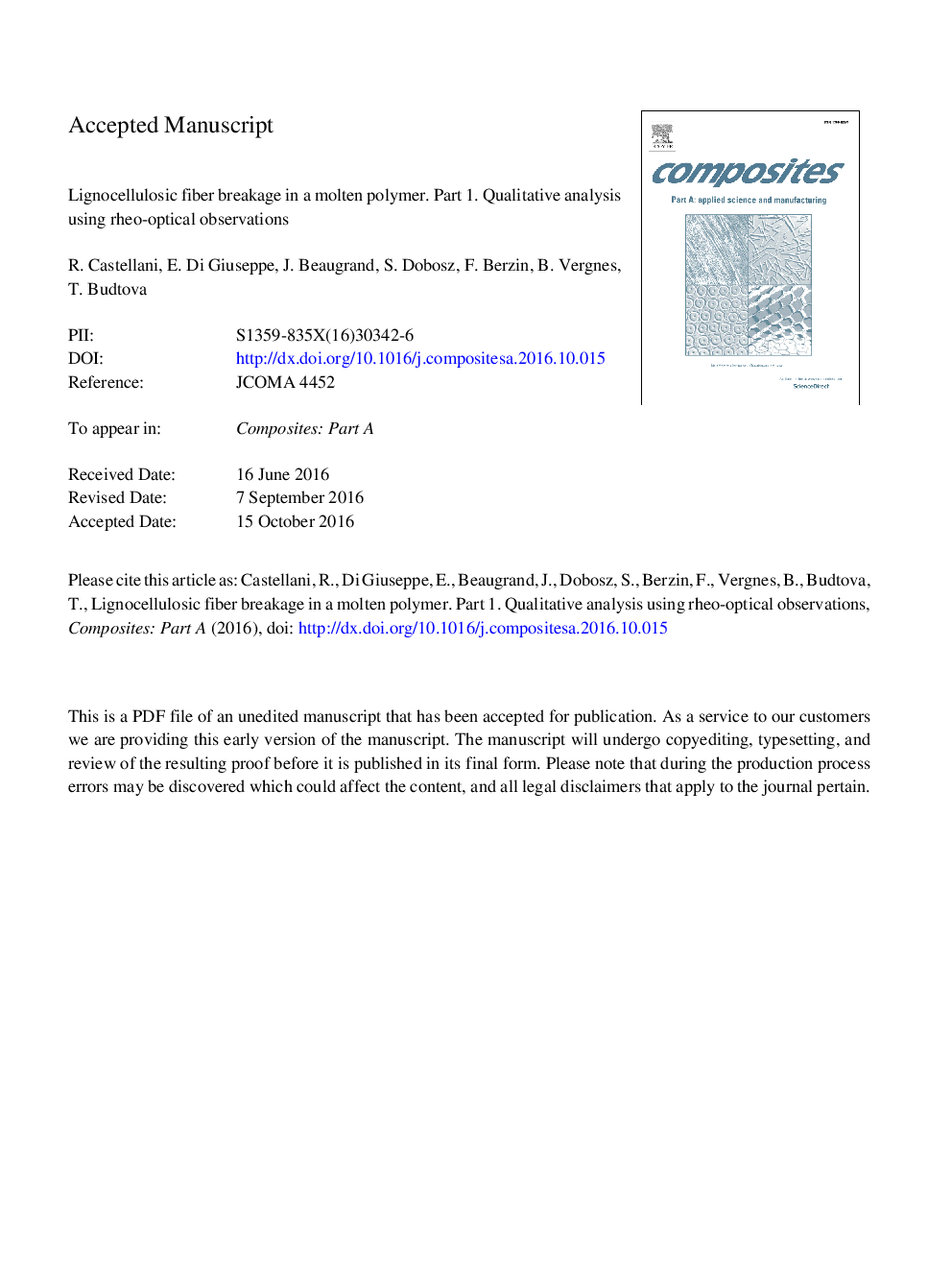| Article ID | Journal | Published Year | Pages | File Type |
|---|---|---|---|---|
| 5439723 | Composites Part A: Applied Science and Manufacturing | 2016 | 28 Pages |
Abstract
Understanding how lignocellulosic fibers break during compounding and shaping processes (e.g. extrusion, injection) is of the greatest importance for mastering fiber size evolution and thus predicting composite mechanical properties. In this first paper of a series devoted to this topic, rheo-optical experiments were used for a direct observation of fibers' behavior when sheared in a molten thermoplastic matrix. Fibers from four vegetal species were studied: hemp, flax, sisal and miscanthus. While possessing different morphological, composition and mechanical characteristics, these fibers also display different preponderant breakage mechanisms. We were able to distinguish fibers breakage (i) in a fragile way (flax and sisal), (ii) by fatigue, i.e. cumulated strain (hemp), or (iii) by peeling (miscanthus). Each fiber type is qualitatively classified according to these categories and correlations with lignin and hemicellulose contents are discussed.
Related Topics
Physical Sciences and Engineering
Materials Science
Ceramics and Composites
Authors
R. Castellani, E. Di Giuseppe, J. Beaugrand, S. Dobosz, F. Berzin, B. Vergnes, T. Budtova,
